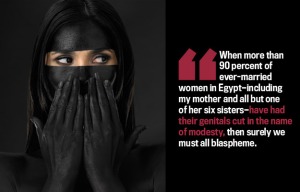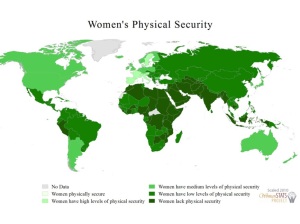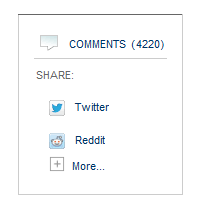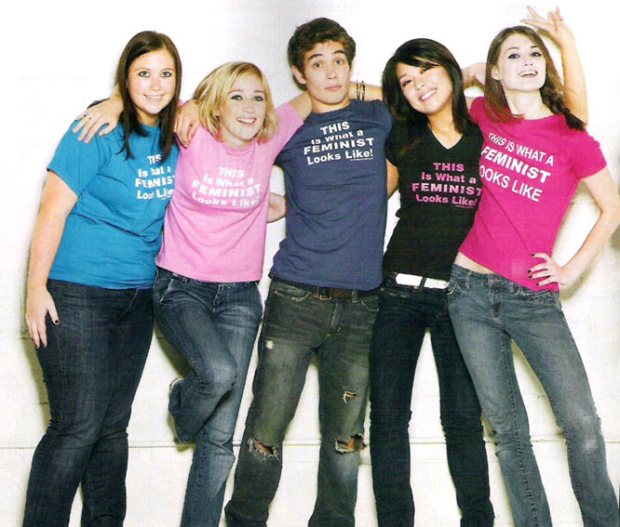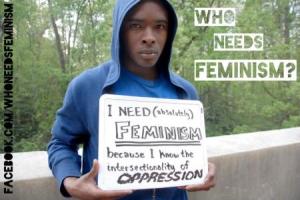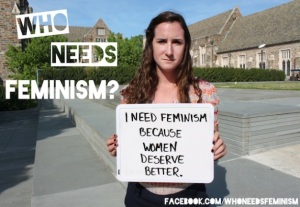Posts Tagged social network
Internet : A voice to feminist journalists
Posted by fsator in Uncategorized on November 26, 2012
Internet definitely changed feminism. You don’t need to be Simone de Beauvoir or some kind of Jeanne d’Arc to be a feminist writer.
If before women were struggling to defend their rights, today the situation is completely different. It is way simpler to sit behind our screen to write and post our opinion on gender inequality.
February 1971; Swiss women have the right to vote. Thanks to hundreds of women who fought for it finally a women has a voice. But that doesn’t mean inequality collapsed. Not at all. Women continued to fight for a lot of other things (abortion for example) in very different ways (riots, books, add…). Until internet appeared… Feminist had a new wide range of communication. Thankfully internet is a good guy, it doesn’t make any distinction. Let’s face it ; internet opened new doors for us. I thought it would be interesting to see those new communication tools, internet offered to feminist. What would feminism have looked like without internet? Surely not like this…
 Websites as a voice for feminism:
Websites as a voice for feminism:
Feminism is not about shouting “men are jerks, women are better”.
Mona Eltahawy, a feminist journalist, fears an autumn for women after the Arab Spring. She uses internet to post article on a foreign policy website to reveal the conditions of women in the Arab world. All right we already knew that women weren’t treated like this:
In her article “why do they hate us”, Mona Eltahawy denounces
“Until the rage shifts from the oppressors in our presidential palaces to the oppressors on our streets and in our homes, our revolution has not even begun”
No doubt that without internet her article would never have been published in an Arab country.
I can’t imagine this picture in the Egyptian libraries or walls:
On the same website we can also look at a map where we can discover the countries where it is less secure to be a women:
If it wasn’t on internet, this map wouldn’t have been published in a book or maybe in some of them. But as we can see there are no countries where women are considered physically secured.
But Mona Elhatawy article and those maps brought many feedbacks on social networks. As we can see here is how the articles have been commented:
A very encouraging result…
Blogs: Another voice to feminism
All right, you don’t work for a huge online newspaper. That is fine; internet permits you to have a…blog!
And there are so many blogs, so many feminist writing about their experiences or expressing their opinion that making a selection was really hard.
But I managed to rank those blogs by preference:
– Feministing:  Yes feminist but also actual! It is like reading your newspaper in a feminine version. For example on the 14th of November, America is talking about the “women triangle” that shook the CIA. Well feministing is going to give you the other version “a CIA director who cheated on his wife”. And not the other version, “the women who disturbed CIA”
Yes feminist but also actual! It is like reading your newspaper in a feminine version. For example on the 14th of November, America is talking about the “women triangle” that shook the CIA. Well feministing is going to give you the other version “a CIA director who cheated on his wife”. And not the other version, “the women who disturbed CIA”
Yes Feministing is definitely a blog to read in the morning while taking your breakfast.
– Echnide of the snake: what a weird name for a blog. The blogger started it in 2003 and it mainly reflects what happen every day in the women world. For example we discover an article about an Irish woman who died after being denied abortion.
– Viedemeuf: 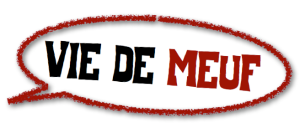 “chick life” in English, is a blog written by every woman who witnessed a sexist event or something that surprised her in her life. Owned by the group “osez le feminsime” it gives the opportunity to citizens to rule the blog. For example Helen, a blogger, says:
“chick life” in English, is a blog written by every woman who witnessed a sexist event or something that surprised her in her life. Owned by the group “osez le feminsime” it gives the opportunity to citizens to rule the blog. For example Helen, a blogger, says:
Today in Walt Disney’s bathroom I saw a man cleaning his baby; why are they baby equipment only in women’s bathroom?
This was just an extract among every other blogs you can find. Feminist journalism exists, but also anti-feminism journalism. But I am not going to give you any links…I am not going to do any advertisement for the enemy!
Videos : 3 minutes to say “yes to feminism”.
The good thing about a video it is that you can hear people talking, see them acting and get the message easily.
It might be easier to be funny through a video than a text… Not for everybody of course but a group of young people succeed at being very funny through their videos.
It came from a simple idea: what if we exchanged our roles? Let’s put a woman in the shoes of a man for 2 minutes, make her act like a man and see what it looks like. Well the result is pretty hilarious. Judge by yourself:
“Osez le feminism”, in English “dare feminism” are hundreds of feminist militants who come together to fight for women rights. Videos are just a small part of their work; they have a serious website, with serious event and serious people.
Pictures: A simple and quick voice to feminism
Ever wondered what a feminist looked like?
Or
I bet you want to have the same! Here is a website where you can buy it: The feminist T-shirt
Let’s take a look at another kind of pictures:
Some of them are worth a thousand words.
Sixteen women of Professor Rachel Seidman’s Women in the Public Sphere course at Duke University decided to put words and pictures together. On their blog Who needs feminism.
They post pictures of people from all over the world who explains why they need feminism for.
Children, man, woman, from all generations come all together to say why feminism is important.
Here are some pictures:
Social networking: the newest voice to feminism
Twitter, facebook ect… who didn’t hear about it? If you are not on twitter or facebook that is fine, but if you don’t know what the hell we are talking about, I am going to ask you “how are you reading this from Mars?!”.
And those tools are definitely excellent tools to spread a message.
The facebook group “Feminism” and”feminist frequency” organizes events, and tells us all about feminism and women in the world. “Liking” one of these pages allows all your facebook friends to know that you are feminist or like what the group does.
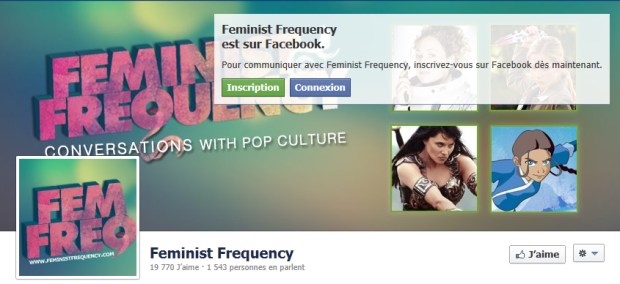 And we have feminist twists that we can follow! “Feminist” hulk is an amazing feminist twitter profile that I love to follow because it is hard not to laught!
And we have feminist twists that we can follow! “Feminist” hulk is an amazing feminist twitter profile that I love to follow because it is hard not to laught!
Thanks to twitter feminism is now following you!
*We need feminism to do our duty as women, mothers, employees or simply for not being judged…we don’t need to be perfect (translation of the twitt)
If after all this you think that they are not enough messages and expression for feminism, I don’t know what to add to convince you. We can’t deny that internet changed the way we live. Everyone has a voice. The only thing you need is a computer and the wifi.
Dear internet, Mozilla, google, facebook, twitter ect… thank you for being awesome feminist friends!
Tutorial: the use of social networks (Twitter and Facebook) as a journalist
Posted by guillaume35 in Entertainment, Technology on November 26, 2012
Both Twitter and Facebook cannot be ignored any more when talking about the World Wide Web. Thus are they surely to be considered when using the amazing internet tool as a journalist. Let’s now have a look at how to get the best of it!
Guillaume Laurent
The social networks, by the number of subscribers they gather, are a rich source of information, as well as an amazing showcase. Therefore, it can be used by journalists in a number of ways: to always be aware of what is going on and interesting people, to try to get people to give their opinion about a subject, to get some feedbacks about an article, or to extend one’s readership and number of followers. In the interest of being more accurate, I’ll focus here only on the use of Twitter and Facebook Here are the few tips you will need to be an efficient social network journalist!
Three things to know when using social networks as a source
1- Verification must without contest be your main concern when using social networks as a source. If social networks can often be much quicker than traditional Medias to provide a story, they cannot be trusted, and the journalist must look around to see if other users or legitimate sources providers can confirm the story.
2- You have to develop your own trusted network within social Medias. Getting the wider choice among a group of users you now are trustworthy is a powerful asset for a journalist using social networks.
3- You must be systematic when using social Medias as a source. By doing the same ritual times and times again, you will gain a more accurate judgment about what is said on social networks, and thereafter win a lot in efficiency.
Three things to know when using social networks to gather opinions
1- Think about your personal experience on social networks. In which circumstances would you give your opinion? Which kind of question would you actually answer and which kind you wouldn’t? It will give you a valuable clue to guess how to manage your audience and get the best of it.
2- Before looking after opinions, you have to decide if you want to get a number based statistic answer or rather a few interesting witnesses. You will get more answers with a question that can be answered only by “yes” or “no”, but an open question will often give you more information to deal with.
3- Create a debate. To give their opinion about a specific subject, people must feel concerned, disturbed, annoyed or enthusiasm. Therefore you should give a direction to your question, give something of yourself to push your followers to react. .
Three things to know when using social networks to get some feedbacks about one’s articles
1- Getting a lot of feedbacks can be dangerous for your website. If you want to advertise using social networks you will have to be ready to assume de consequences. I mean managing properly de comments posted on your page or website. Otherwise, spamming or provocative answers will quickly suffocate the debate.
2- Before advertising on social networks, you must be aware that everything you will post, included answers to readers, comments or random posts, will be considered as a part of your work and evaluated and criticize in this sense. There for having separates account for your private life and your job can be very useful.
3- Post pictures and videos to get attention. Even if your work is mainly based on writing, you will have to use pictures and videos. It will surely get you more feedback, and images are what modern internet journalism is all about.
Three things to know when using social networks to extend one’s readership
1- “Tweet your beat”, the advice was given by Lauren Invik, from the social medias specialized website marshable.com. If you want to get some authority on social networks and bring in something more than the millions of other users, you have to be a specialist. That means tweeting or publishing on Facebook only when you know exactly what you are talking about. Giving your opinion on random subjects is not a plan for a good social networks journalist.

2- Being a specialist also includes being among the first to get the news about your favorite subject. Therefore is it necessary to give to your audience more than your own stories. Using in a wise way the retweet or share opportunity will help you a lot while trying to please your followers and make your account attractive.
3- Link as much as possible your publications. The hashtag and the “@” button are crucial not only to reach a wider public, but also to show your sources and make your information safe and valuable. Websites like tagboard.com are based on the use of the “@” and de hashtag and often used by people to look for news about a specific subject.
So, fellow journalists, have you already been using successfully social Medias in your work? Would you add some advices to the previous shortlist? This article is meant to be updated and enhanced by your contribution!
To become a perfect social Media journalist: more advices with this Youtube vidéo from BeatBlogging.Org
More on the subject with this France 2 TV show about Twitter brodcasted in 2010
Facebook as a journalistic tool
Posted by emilienasel in Technology on November 25, 2012
Facebook is becoming an increasingly popular tool in media circles opening up a wide scope of new interactivity. Let’s take a look at how journalists use this social network as a part of their work.
My parents have often said that Facebook is useless. Well, they couldn’t be more wrong! Since its launch in 2004, more and more journalists use it as a professional tool. Through profiles and pages that I have looked at, I analyzed how journalists use Facebook.
Two uses for the journalists
Firstly a very valuable journalistic use of this social network is crowdsourcing. Many journalists seek interaction with the public by asking their fans for their opinion on current issues. This enables them to get large numbers of answers in record time. One of the most active journalists in the field is probably Nicholas Kristof, columnist for The New York Times, who posts articles or news links several times a week while asking his reader to give their opinion.
 |
 |
While browsing on Facebook, it is obvious that news is everywhere. The interaction of the users within the social network allows journalists to find which topics of interest or concern attract people. David Abiker, a radio columnist at France Info, confirmed in an interview for journ@lism.info: “Sometimes, my friends offer me news or a buzz to treat. In this case, Facebook can become a source of information. Facebook allows you to see how people react to new items.” (Read the entire interview here.)
Secondly, Facebook is very useful when looking for testimonies. This practice ca be observed in different countries. In Switzerland, Darius Rochebin, a RTS journalist, is very active on his account: “Facebook is valuable when we are trying to find a testimony. Links can be made between Facebook friends and potential witnesses.”
In France, David Abiker also uses this method:
“Facebook allows me to find experts or witnesses. So when I need a particular guest, I post something like this: “David Abiker is looking for a sports psychologist”, or “David Abiker is looking for an Internet specialist”, and it works pretty well.“
In the United States, Lisa Eckelbecker, a reporter for the Worcester Telegram & Gazette, also uses Facebook to search for testimonies: “Recently, I asked my Massachusetts friends if they could help me find sources for a story on supermarket retailing.“
Facebook is a very useful tool in journalism because it is a huge time-saver when it comes to looking for evidence. Darius Rochebin explains: “What used to take two or three hours, now takes only few minutes. Before, it was often necessary to make dozens of phone calls to reach the person you wanted. Now, thanks to mutual friends, in a few clicks you can find what you are looking for.“
Mark Zuckerberg is now friend with journalists
If journalists are now becoming increasingly aware of the potential that Facebook offers them in their work, Mark Zuckerberg’s team has been developing a strategy to attract more journalists since 2011. In April 2011, the social network launched its page “Journalists on Facebook“. The purpose of this page was to make Facebook more popular with journalists, in particular with a search engine of sources.
(Video of Mashable with Vadim Lavrusik, journalism program manager at Facebook)
In the meantime, Facebook launched a survey among journalists giving rise to five elements encouraging them to use Facebook more efficiently :
- Posts which include questions lead to an increase of “like” of 15%.
- Posts with a photo or a link collect 50% of more “likes”.
- Internet users comment more frequently posts published on Thursday, Fridays, Saturdays and Sundays, in the early morning (between 7am and 8am), at the end of the day or late in the evening.
- Personal thoughts included in the publication generate a higher click rate than a classical post.
- Topics about education, politics or journalistic analysis get more feedback than others.
(Read the entire conclusions of the survey here.)
To conclude, my parents were indeed wrong: Facebook can be useful in some areas. Mark Zuckerberg’s site has now became essential for most journalists. Even Darius Rochebin admits:
“In my opinion, journalists who refuse to use Facebook are making a big mistake. Personally, I could not do without it, it has become an absolute necessity.“
But, will Facebook, like Twitter, gradually become a site for professionals rather than for private users?
Sex on Facebook
Escorting agencies, escort girls, call girls; Facebook and Twitter have become the ideal place for the sex industry to make business. Just type “escort girls” in the search engine of Facebook and you are going to find countless categories, groups, applications, people, and pages related to escort services. Try the same operation on Twitter and a same constant stream of tweets proposer’s appointments, places and dates will pop up on your browser.
Is it that important for escorting agencies to be present on the internet? “Yes, it is necessary, although we have a strong presence on the web“, Adalaïs replies, ex-escort and director of “Platinum Escorting” in Geneva. The agency was founded in 1999 and has been working in Switzerland and internationally since.
The Facebook page of this agency is new and is still under construction. What sort of benefits can Escorting find on Facebook? “The social network can be developed easily while keeping the user masked, thus confidentiality”. Adalaïs says.
There are many groups and profiles pages like Platinum Escorts. All are seeking to use the exceptional range of users offered by Facebook. How standing out? One way would be to offer a “serious” service. A variable that make sense: “it is very important because the page is the image of the agency.” Adalaïs informs. As an example, take the notion of “group“ on Facebook.
This is a group that display some girls who offer their services and locations.
When we click on “about“, the page is very poor. We find only the picture of some girls and others who are quite anonymous. We cannot find out real information.

Facebook, group “Escorts Girls”, about. Because I get no answers about the usage of these images. I personaly masqued the faces.
It seems clear that on this group, girls are directly visible and show their profiles.
In “files” we find a short description:
“Elegance, charm, beauty, sensuality, culture, etiquette and discretion, our escorts accompanies you for various occasions, whether for a relaxing time, a dinner, or any other applications as desired.”
This group is actually a link to a French website. We do not know if this is an official page. Are all women escort girls in this group? Is it a problem if we would come to see the girls’ faces like here in “Escorts Girls” group?

On “Escorts Girls” everyone see the faces girls. Because I get no answers about the usage of these images. I personaly masqued the faces.
Adalaïs is attentive to this delicate situation: “Internet (especially Facebook and Twitter) does not stop in Switzerland or at a specific location, but it can be accessed from anywhere. Their friends, family, the employer, or some people could use their profiles to do bad things”. In his agency we will never see faces on a webpage.
Is it to say that girls of Platinum Escorting do not have Facebook profiles? “Our employees have private pages on Facebook. To my knowledge, few young women have their professional pages on Facebook and Twitter, but this is just a plus, because they are primary working with the agency and with special escorting platforms“.
A lot has been said about Facebook, but Twitter is also a popular platform. Again, if you type “Escort Girls” in the search engine you come across countless tweets. There is a continuous flow of information, very often more than four tweets per hour.
Escorting Platinum is planning to move there too. Why? To Adalaïs : “The benefits are the same as for Facebook, but with a twist: the live.” In other words, Twitter provides a platform that links to the website of the company that offers the opportunity to give information fresh and direct to potential customers.
The future for escorting on social networks has many facets. This article deals only with the aspect of “agency”, but many other forms exist. For example self-promotion (dangerous in terms of images), especially for women doing it for a short period of time. But other phenomenon, more curious, have been recently coming up, such as paying five dollars to be friends with someone on Facebook. A kind of 2.0 escorting. Young women proposing to be friends for money.
Sometimes the contract stipulates that she will post messages on the wall of his client. The ultimate goal is to show an exciting social life as traditional escorting.
Jason Huther
Why this theme?
Before the success of Facebook and Twitter, prostitution on the Internet was not under the spotlight. We always forgot this part of the economy and it is still true for social networks. In the case of social Networking it’s the same.
We talk a lot about the influence of social media in everyday life and in the economy, about enterprises that are created on social media, about the opportunities that are generated by the companies which see it as a form of future. Escorting agencies are part of these companies. Escort girls are among those who benefit from these opportunities.
It seemed to me interesting to talk about this particular business. Nowadays it has become a common thing for students to practice this activity. This is also why I wanted to talk about this subject. How those women take ownership of these networks? Are they sensitive to their dangers? Has it become necessary to be present on these networks to practice this profession?
I tried to get answers from girls working in “Escorts Girls”, but I have not been able to obtain them. As my article is built up only on information I can get through social media, I did not search further. It was frustrating, but it shows one of the limits of the use of Facebook when trying to do real investigative journalism.
Thanks for reading.
The Madrid tennis Open 2011
Posted by ducommunaudrey in Uncategorized on May 13, 2011
You are a tennis fan, but your studies or your job do not allow you to follow a tennis tournament because you can’t watch the matches on the television or on Internet in live… I have got the solution and i’m going to prove that it is possible to follow them thanks to the social networks! With Twitter, Facebook and YouTube, you can follow the news of the best players. Yes, you can watch all the best moments that you missed; it is very easy. Let’s take an example with the recent Mutua Madrid Open of tennis 2011. I’m going to summarize the open tournament with information coming only from tweets, facebook pages and YouTube videos.
The Madrid Open is a very nice tennis open, because it is the opportunity to begin the clay-court training for a lot of tennis players. The little altitude of Madrid enables to play really quickly. Just the week after, the tournament in Rome completes the training to be fit for the Grand Slam of Roland Garros. Brad Gilbert is a tennis analyst, coach and a best-selling author. He confirms us on Twitter that the clay-court season has begun.
But for the tennis fans, the event began a bit earlier. In fact, they could take part to the recruitment by competitive examination. By posting a video on YouTube demonstrating their motivation, they could win the chance to be the video blogger during the event.
MutuaMadridOpen was really active on Twitter, as soon as they annouced the opening of the event!
However, all the information twitted was a link to some YouTube videos. In fact, there is a special page on YouTube, where you could follow the news day after day, some interviews, the best shot points, and you could access to a video that summarize the day.
On the 30th of March in the evening, the Mutua Madrid Open organized a gala dinner with a lot of tennis players as guests to celebrate the 10th birthday of the event!
After the party, it is time to focus on the matches. The first day already had its first big matches and surprises, for instance the encounter between Jo-Wilfried Tsonga and Nicolas Almagro. Even if the Spanish player was favorite because of his world ranking, the French Tsonga did not give the chance to Almagro to win (6-1, 6-3).
On the second day, we could notice a very nice shot in the match which confronted Andy Roddick and Flavio Cipolla. It was an incredible match, because Cipolla, the World No.160 caused the biggest upset of his carrer and beat the American Roddick in three gruelling sets: 6-4, 6-7 (7), 6-3.
On the 2nd of May, after the first matches it was still time to guess, to analyse and to bet on who was going to win, who was the favorite and so on… Here Rafael Nadal was talking about his future matches. The Facebook page of ATP World Tour asked: Is Juan Martin del Potro the biggest threat on clay?
The next day, one of the biggest matches presented David Ferrer against Adrian Mannarino. After a long fight to win the first set, Ferrer completely fell apart in the second. But the third set showed a strong player, who wanted to win despite the humiliation. At the end, Ferrer delighted home fans by beating the Frenchman 7-5, 0-6, 6-0. They played with passion and had some amazing shots. For instance, this one:
Wednesday the 4th, was also again a big day, because the best players were playing with the aim to go in the 1/8th final. Here it is confirmed by the active tweets of ATPWorldTour.
On the social networks, we spoke a lot about the biggest players in the world. Nadal, Federer, Murray, but in this moment everybody focused on Djokovic. In fact, since the beginning this year, he seems unbeatable… Is he going to continue his serie of winning matches?
The deepest suspense happend during the match of Roger Federer against Feliciano Lopez… You could follow the match in live with Twitter:
While the other players won their matches quite easily, Federer had to fight. On the Facebook page of the ATP World Tour, they asked the poor fans if they were worried!
Of course, the fans were concerned, like on Twitter, a special group of tennisfanz!
But it was a great tennis day. The organizers were very happy and lucky, in fact, the best players were still in the run to win. The official Facebook page of the tournament exulted:
A lot of people were under the spot during the event, but not only tennis players. For instance, here we can see Ronaldo… He caught a tennis ball during the match!
 The next day announced a bad news. The so long-awaited fight between Nadal and Del Potro was cancelled. The Argentine player had got a hip pain and had to give up.
The next day announced a bad news. The so long-awaited fight between Nadal and Del Potro was cancelled. The Argentine player had got a hip pain and had to give up.
But the show continued and the 1/4th finals were coming soon!
After the qualification of Nadal, Federer and Bellucci for the semifinals of the 2011 Mutua Madrid Open, the World No.2 Novak Djokovic beat the crowd’s favorite David Ferrer. After an amazing match, he won 6-4, 4-6, 6-3.
See here perhaps the most exciting and bizarre point of 2011 so far:
On Saturday, the highlights were on the match Federer-Nadal. It was possible to follow in real time the match with the tweets of the ATPWorldTour.
A few moments after, it was the tour of Djokovic to access the final! And again, it was time to bet and to speak about the record…
What better than to relive the final with a summary of the best moments of the match. You will notice that one shot of Nadal was an historical one! Just enjoy!
By clicking here and here, you can access, with a Facebook count, to the photo album of the Tennis tournament, posted on the official Facebook page of the event!
After this huge new victory, Djokovic wrote a small tweet to thank the fans…
 Next week, the Rome’s tournament can change the World tennis ranking… If Djokovic wins the championship and Nadal fails to reach the semifinals, Djokovic will become the first player other than Nadal or Roger Federer to hold the No. 1 ranking since February 2004.
Next week, the Rome’s tournament can change the World tennis ranking… If Djokovic wins the championship and Nadal fails to reach the semifinals, Djokovic will become the first player other than Nadal or Roger Federer to hold the No. 1 ranking since February 2004.
Yes, it is possible to follow a tennis open with social networks. You just need to subscribe to the right tweets and to find the official Facebook page of the event. The Facebook ATPWorldTour is really nice to follow the whole tennis news. And you know that a lot of videos of the best moments are posted on YouTube, so you can work quietly and enjoy in the evening…!
The new freaky monsters of web 2.0
Posted by dandresg in Uncategorized on May 12, 2011
These individuals are part of the last and biggest buzzes on Internet. They have made their own popularity by posting and by sharing content. A very specific type of content: home-made webcam videos. In fact, they are the producer, distributor and actor of their own story. They wanted to be known on Internet for their wisdom or their useful tips; they are only known for being ridiculous. Where many others have failed because their videos have been remaining ignored by Internet users, they have become very popular, but not in the way they wanted. Today we can find lots of examples of such productions, but in this study we are going to illustrate our comment by two stories of this type: Jean-Pierre Herlant and Joharno, who are part of the new freaky monsters of web 2.0.
The very specificity of these buzzes is that they have appeared directly through the canal of social medias, and not before that in newspapers, on radio or on TV. YouTube at first, but then also Twitter and Facebook are the main platforms where they have spread and reached a very large audience of Internet users. Let’s begin with this singular characteristic.
The birth and spread of buzzes
The process for these videos to become buzzes is quite easy to understand:
- At the beginning, the specific content sharers we are talking about have post their videos in totally free access on social networks as YouTube –and sometimes, as Joharno, on their personal blog –where they usually have received a high quantity of comments once their videos watched by many visitors (YouTube makes it easier by displaying the newest videos on the homepage of every user or classifying them by topics). Then these videos have quickly reached the top rank of popularity and have been viewed by more and more visitors.
(1)

(2)
 (1) The profile of Jean-Pierre Herlant on YouTube, 3318107 views on the total of posted videos, 271488 views for the most viewed(2) The videos available on the blog of Joharno, 375813 views for the most viewed of his videos on YouTube
(1) The profile of Jean-Pierre Herlant on YouTube, 3318107 views on the total of posted videos, 271488 views for the most viewed(2) The videos available on the blog of Joharno, 375813 views for the most viewed of his videos on YouTube
- Logically, they have spread to the main social medias as Facebook or Twitter trough the display of tweets and retweets, direct links, groups and pages, what allows many more Internet users to come to YouTube and watch them.
(1)

(2)
 (1)The Twitter of Joharno (about 100 followers) with tweets to his latest videos: is it a fake? However, there are several tweets and re-tweets from other users linking to these same videos available on YouTube or on Joharno’s blog(2)Jean-Pierre Herlant on Facebook: 123 different groups and pages and 14501 fans in the most popular of them
(1)The Twitter of Joharno (about 100 followers) with tweets to his latest videos: is it a fake? However, there are several tweets and re-tweets from other users linking to these same videos available on YouTube or on Joharno’s blog(2)Jean-Pierre Herlant on Facebook: 123 different groups and pages and 14501 fans in the most popular of them
- Once their popularity is established, these videos have been related as new trends on the blogosphere and on other opinion websites with direct links to the content on YouTube. And then they have finally reached traditional medias, mainly through their online pages, but sometimes also directly on print newspapers, radios or TVs if the buzz was strong enough and lasted enough time. (1) The first traditional media to have spoken about Jean-Pierre Herlant is the radio Virgin, overall by making fun about him; the comments of the moderator Daniel Guillon have even received a rough answer of Jean-Pierre on a new video posted on YouTube (2)Joharno in traditional medias, after the buzz of his videos on YouTube
The nature of the content: the new “Elephantmen”
We have just seen the way these buzzes are created and develop, but it doesn’t tell anything about the nature of the content itself nore about the intentions of the concerned creators. Why have these videos such a great impact on social medias? Why did they become buzzes after a few time online?
With the evolution of Internet to web 2.0, we know that everybody today has become a potential content creator. In other words, this situation gives to everybody the possibility to express his feelings or his thoughts worldwide through the web. That is just the point with the stories we are talking about. The content sharers may not be able to speech to a whole community in current life (offline) and now this option is given to them online. Thus, they have risen themselves to the status of opinion leaders and have tried to influence directly connected people with their home-made videos. Their purpose is to transmit experienced tips or even a whole vision of life, of course supposed to be truthful and useful. Some of them have been commenting actualities or singular topics of everyday life and expressing philosophical thoughts (like Joharno) and others spreading online the way to talk to a woman or insulting politics (like Jean-Pierre Herlant). Here are two of their most viewed videos:
Of course, the videos which become buzzes are the most ridiculous, and not the most useful or the cleverest. And their creators become the last freaky monsters of Internet, and not gurus or spiritual guides as they wanted. Once the irony spread through Int ernet, the reactions are very different depending on the personality of each. Jean-Pierre Herlant stopped to create videos because too many people were displaying bad comments or making fun about him (he announced it on Twitter). Since that day, he has been forgotten. But for Joharno, this was a great opportunity to be known as a “legend” –as he says himself –on the web: till 2009, when some of his videos were discovered and propelled on the social networks, he has been keeping on sharing content on his blog and on YouTube. He created his own mark! Joharno’s videos are now more humoristic, why he is trying to keep his popularity. But it doesn’t fit: being intentionally stupid doesn’t seem to work so well. Joharno decided to be the only “legend” on YouTube and begun to clash on his videos other content sharers who had become buzzes like him. And today the war for YouTube and Facebook “fans” and for the highest number of views is going on.
ernet, the reactions are very different depending on the personality of each. Jean-Pierre Herlant stopped to create videos because too many people were displaying bad comments or making fun about him (he announced it on Twitter). Since that day, he has been forgotten. But for Joharno, this was a great opportunity to be known as a “legend” –as he says himself –on the web: till 2009, when some of his videos were discovered and propelled on the social networks, he has been keeping on sharing content on his blog and on YouTube. He created his own mark! Joharno’s videos are now more humoristic, why he is trying to keep his popularity. But it doesn’t fit: being intentionally stupid doesn’t seem to work so well. Joharno decided to be the only “legend” on YouTube and begun to clash on his videos other content sharers who had become buzzes like him. And today the war for YouTube and Facebook “fans” and for the highest number of views is going on.
Two different worlds
How have been these content sharers innocent enough to post such videos on the web? We can suppose that some of them are a few mentally disabled, but that is not sure at all. What is sure is that they all have a bad understanding of Internet world: it is not a world of opinion leaders, but one in which everybody can build his own points of view individually. Thus, there is an epistemological rupture between their expectations and the reality of the web. We can see it especially among the comments they receive under their videos: the very big majority of them are insults, sarcasms or demonstrations of pity. It is the same with most of the tweets and groups or pages created around them on Facebook.
Gilles D’Andrès
Réseaux sociaux
Posted by ducommunaudrey in Uncategorized on January 10, 2011
Comment les médias se servent-ils de Facebook?
Les réseaux sociaux ont pris depuis quelques années une proportion exceptionnelle dans le quotidien des internautes. Qui n’a pas de compte Twitter, Facebook ou MySpace ? Combien de fois vous connectez-vous et combien de temps y passez-vous ? Nous allons ici nous pencher plus en profondeur sur le cas de Facebook. Ce réseau, qui a dernièrement dépassé Yahoo au niveau du nombre de visites, est positionné troisième plateforme mondiale la plus visitée sur le web. Un avantage, un danger ?
Pour les médias traditionnels, il s’agit surtout d’une opportunité à saisir sans attendre ! En effet, Facebook c’est aussi le début d’une vision radicalement différente de l’usage du web par les internautes. Il s’agit d’un moyen alternatif pour les « fans » d’accéder aux informations, par le biais des liens, des groupes et commentaires que l’on peut trouver et partager sur Facebook. Alors comment les médias se servent-ils de Facebook ? C’est ce que nous allons analyser dans cet article.
Saviez-vous qu’il existe une page Facebook justement dédiée aux médias ? Nommée Facebook+Media, elle suggère aux médias quelques conseils afin d’utiliser au mieux les possibilités du réseau. Il existe de nombreux boutons, tel que « J’aime », « Partager » ou « Recommender », qui permettent de faire suivre des liens, qui peuvent rapidement faire le tour de nombreux utilisateurs. Mais avoir sa propre page Facebook, créer des événements et encourager les forums peuvent être tout autant bénéfique pour les médias. Les chaînes de télévision, les radios, les journaux, les blogs et services sur Internet : tout le monde peut élargir son réseau par le biais de Facebook. Est-ce que ce n’est pas magnifique ? De plus, maintenant rares sont les pages qui ne sont pas pourvues de ces petits logos !
Mais alors, tout le monde peut devenir journaliste et participer dans ce nouveau monde de l’information ? Oui ! Non seulement, c’est grâce aux internautes, que les liens se forment, que les sphères d’amis et de connaissances s’entrecoupent, mais en plus nous pouvons transmettre des informations très rapidement ! Lors d’une interview, Xavier Couture, ancien journaliste et publicitaire, notamment pour TF1, le relève par un exemple: « Prenez la cérémonie d’investiture d’Obama. CNN s’est associée avec Facebook pour permettre aux membres de la communauté Internet de commenter en direct la cérémonie. »
La presse
Alors que la crise de la presse se fait ressentir dans le monde entier, les journaux tentent de se relancer par la voie numérique. Facebook peut donc être une solution pour chercher de nouveaux lecteurs ! Prenons par exemple, le journal suisse romand Le Matin. Si l’on devient fan de leur page Facebook, alors vous êtes directement informés des dernières actualités. Les liens proposés amènent sur le site officiel du quotidien. C’est rapide, c’est pratique et ça ne coûte rien, ni pour vous, ni pour le journal !
Voici un graphique, qui représente vraiment l’impact de Facebook. Il existe bien des façons pour amener les visiteurs sur un site média, mais ici, face à Google News, c’est par le biais du réseau social que les internautes sont majoritairement passés.
La télévision
Nous pouvons faire la même observation dans le domaine de la télévision. En effet, une étude menée au Royaume-Uni par Yougove-Deloitte en 2010 a résulté sur une constatation, qui sera de moins en moins étonnante : 79% des jeunes de 18-24 ans surfent sur les réseaux sociaux, tel que Facebook, en même temps que de regarder la télévision.
Comment l’a-t-on su ? En constatant le nombre de personne commentant en instantané le programme qu’ils étaient en train de regarder ! Alors il est tout bénéfique pour les opérateurs d’être présents sur Facebook, pour aller chercher plus d’audience. Ils peuvent également attirer les internautes sur leurs pages, en proposant des contenus supplémentaires ou lancer des discussions, tant recherchées par les fans. C’est un lieu de rencontre qui peut attirer les individus sur les sites officiels ! Futé, n’est-ce pas ?
La radio
Pour finir, nous pouvons évoquer le cas des radios, comme par exemple la radio genevoise ONE FM. Les ondes ne permettent pas de transmettre des images, des vidéos et ne donnent pas la possibilité aux auditeurs de répondre et interagir avec les acteurs de la radio. Bien plus efficaces que les blogs proposés sur les sites officiels, les pages Facebook sont idéales pour le partage ! Mais cette interaction peut aussi être un moyen de publicité, afin de chercher de nouveaux auditeurs !
Et vous ? Quel utilisateur de Facebook êtes-vous ? Trouvez-vous que ce réseau social est la plateforme idéale pour se tenir au courant de l’actualité, ou bien restez-vous l’internaute fidèle aux sites de news ?
Audrey Ducommun
Can Facebook become more powerful, and thus more dangerous, in the future?
Posted by mathildejarry in Uncategorized on January 10, 2011
Six years ago, nobody had heard about Facebook. Today, we hear this word at least 10 times a day; try it you’ll see. Even though you belong to the anti-facebook community, you still cannot be indifferent to it.
Mark Zuckerberg can be proud of himself; 26 years old, more than 500,000,000 friends and a salary of 6,900,000,000 dollars a year, here are the figures that witnesses his business success.
Facebook is now competing with google, and Zuckerberg is compared to Bill Gates. The movie “The Social Network” allowed us to see how everything began, the speed to which the concept spread, the controversies, the betrayals, the doubts. But when you see that, you can just say: “Whaou !!!”
But I still wonder, after all those interviews, TV reports, films about this gifted geek, if his company is as innocent and immaculate as him. Tough question.
Different profiles
Some assert that this website is the most dangerous weapon in the world, as if they were talking about the nuclear bomb. Others, on the contrary, are devoted to facebook, using it like a diary in which they can express their deepest feelings and expose it to the world. At last, you have more reasonnable people, arguing that you’re the one in charge of your life: try it to know what this is really about, but beware, keep it under control! I’m one of those.
Having the possibility to post pictures doesn’t mean you have to show the world that you know how to dance the tango on tables, drunk, with a teddy bear. And it’s not because you can say to the world that friday the 7th of January, at 11.35 a.m you’re buying bread for lunch at the bakery around the corner with your sister in Engelberg, that you must update your whereabouts every minute. Some people paid the piper and were found jobless or single. Some even died.
The price to pay
However, nothing’s free, even facebook. If you want to enjoy it, you must pay. Not money, but something else, maybe more important; pieces of yourself: thoughts, moods, tastes, ambitions. That’s part of the game. Of course this brand new big family will always attract advertisers and unscrupulous people but how could it be otherwise ? Facebook is a goldmine, and it’s still up to us to keep this gold as unreachable and expensive as possible. But till when? Let’s not forget that Facebook, with some others, didn’t sign the charter of the right to be forgotten. Sure, Zuckerberg cannot complain about his revenues; but he perfectly knows that he can earn thousands billions and trillions of dollars if he decides to sell the biggest data base one can have in the world. What are his objectives? His future prospects? Who are you Mark?
Even if he keeps repeating that he won’t sell the data base, even him cannot know how he will behave in a couple of years. As we said, Facebook is now as powerful as Google. Indeed, according to two people briefed on Facebook’s plans the social network will soon has its own mail service. The 500 million users will be able to have their own @facebook.com address, whereas hotmail “only” has 360 million members… Why not, but what next?
Let’s just hope we won’t get that far… (sorry for the few bad words)
Being a facebook user means being constantly on the watch. Good luck…
Which generation of media consumers do social networks tend to lead to?
Posted by dandresg in Technology on January 10, 2011
For a few years social networks have appeared on Internet. They have been interpreted very quickly as a revolution in the way to communicate.
A whole real-virtual world
In fact, it is a process very different from the one of the blogs and forums for instance, because social networks, as their names tell it, manage real relationships in a virtual world. They not only throw info or topics at random through Internet or allow people to have a web conversation, but create an entire world of social real-virtual life which is always to manage by each of its users.
For the first time now, social life is available for everybody without leaving home, only by switching on a computer. Every user of Facebook can choose online friends and online social issues and decide which aspect of his profile he wants to show to the whole community and which aspect he prefers to show only to friends. The social networks have been interconnecting people from different corners of the world. Social life has no more time, limits, and barriers. It is available right now, only by clicking and sharing on the web.
A new content diffuser
To a certain extent, it is the same with information in the context of social networks. What is shared on Facebook or Twitter is always information, which can be private, personal or more global such as the news.
But social networks are not really a new media or a new way to inform. They are only a new vector of information that improves a lot the speed and the intensity of the impact of the news on Internet. In other words, we couldn’t talk about content provider, but more about content diffuser. The information often quickly found on Internet by some users is transmitted to others in a few minutes, maybe even in a few seconds. With what consequences?
The problem of quality
Even if the speed of the information delivering process is improved, we cannot say it is the same with quality. Social platforms such as Facebook enable neither a reflexive and clever selection of the contents nor a creative treatment of the information before its diffusion.
In the opposite, the quality of the topics available on Facebook is often poorer than in the traditional Medias because the gate-keeping and agenda-setting work of journalists is totally absent there. For example, information is often confused on social networks with marketing or branding, and more chosen for its joking characteristics than for its seriousness.
Thus the typical new media consumer merged from social networks tends to be a non-media consumer or a rumor consumer. By allowing a very global diffusion of news in a very few time, Facebook seems to be only aggravating the lack of care and caution in the way to be informed on Internet. That’s definitely part of the whole actual debate about the quality of contents on Internet and the future of journalism.
Gilles D’Andrès
AJM
How and in what ways have social networks such as facebook changed the definition of private life?
Posted by pontus4 in Technology on January 10, 2011
Since its creation in 2004 by Mark Zuckerberg, facebook has had an ever increasing number of members. Originally set up as a college dating site, and a place where Mark Zuckerberg and his friends could “rate” girls faces according to their “hotness”, it quickly developed into a major social network site available to all. Nowadays, it seems that “everyone” is on facebook, (approximately 500 million members are registered today) and facebook is often the place where events amongst friends are organised, information related to parties but also work and university lectures in exchanged. But it is not only written information which is shared, pictures are also posted, with no limit as to the amount of photographs that a single user can post. Users can also post pictures of their friends, sometimes in not so flattering situations, and post whichever comments they want, about whomever they want, thinking that these will never be seen by the people concerned. But some people have discovered the pitfalls of facebook to their great despair.
In December 2008 in France, three people where fired from a company after criticising their superiors and the company itself on facebook. Their pages where open for viewing to “friends of friends”, which is how the management of the company eventually saw the degrading and condescending comments, Similar stories have happened in the past. In the UK, an employee posted a comment on her facebook wall on a Friday stating that she hated her job and her boss and that she did not look forward to returning to work on the Monday. Her boss saw this comment. His reply was quick and to the point “oh yeah? Well you won’t be coming back on Monday anyway, since you’re fired. Goodbye!”. Similarly, company owners have declined to give someone a job offer based on information or pictures they have seen on candidate’s facebook pages, if they believe that what they have seen there does not give an appropriate image of the person in question. This is the problem with many social network sites such as facebook, MySpace, Hi5 or similar. People do not realise that all images uploaded on facebook become the property of Google, and that once published on the internet, if their settings are not carefully privatised, these pictures can end up in places never before imagined, such as in the hands of a future employer for example.
Recently, it has been revealed that 92% of the babies under 2 years old in the USA are either on facebook or on other social networking sites pictured on photographs uploaded by their parents! In France, this number is only slightly less, with 73%. 33% of babies already have their photo published on the internet at the time of their birth! These statistics are of course alarming, and perhaps we are not that far away from pictures and videos of the actual births themselves being posted on facebook in minute detail, with people “liking” them and a few years later “tagging” themselves in the picture of them coming out of their mothers womb! People have even started posting scans of their foetuses on facebook.
Another quite extreme case was related by the Swedish newspaper Expressen during the summer of 2007. The article spoke about a woman who had divorced her husband, and, a few weeks later, had met another man, which she had immediately married. As a consequence, she changed her facebook status from “single” to “married”. When her ex husband saw this, he became furious, went over to her house and killed her. One may of course say that this man was perhaps unstable in many ways, and even if facebook had not been there to tell him the news, he would perhaps eventually have found out through another source, and will most likely have killed her anyway, but this example, and the others discussed above definitely prove that it is perhaps not that wise to put every single detail about your private life up on facebook and on social networking sites, as after all, any information you put on facebook, by the second it is up there, it in effect is no longer private, but becomes public information. Thieves may be able to plan hits on a wealthy person0s home because he sees on their facebook page that they are abroad for a month for example, and the statistics about a person0s private life, which are stored in the facebook database, can be transmitted to organisations such as the FBI or similar if they where to ask for it, as well as to advertisers, which, in some cases has happened in the past. Indeed, even if you delete the information from your profile, it is not permanently deleted from the databases. The website openbook.org enables you to search any facebook profiles which do not have strict privacy settings, and shows that even criminals if they wanted to, could potentially access private information of unsuspecting victims.
Nevertheless, if you are careful with the way in which you use social networking sites, they can be very useful planning and communication tools, and many big companies and TV channels such as CNN for example now also have their own facebook page, for conveniently sharing information with colleagues and the general public. So in conclusion, social networking sites have definitely changed the definitions of private life both in a positive and a negative sense, but if used wisely and carefully, they can prove to be very helpful tools of communication indeed.
Pontus Wallstén
AJM


